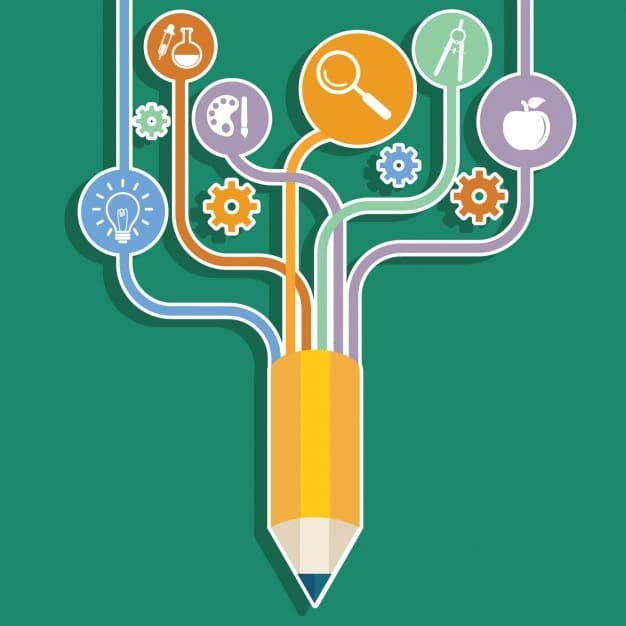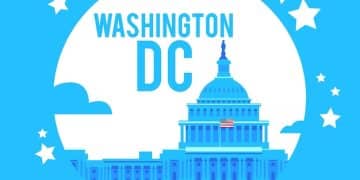US Education Reform: Examining Proposed Changes & Outcomes

Proposed reforms to the US education system aim to enhance equity, quality, and outcomes for all students, addressing long-standing challenges and adapting to future societal needs.
The US Education System: Examining the Proposed Reforms and Their Potential Outcomes offers a critical look into the ongoing efforts to reshape American schooling. This exploration delves into the various facets of these proposed changes, from curriculum enhancements to funding models, aiming to understand their potential impact on students, educators, and the broader society.
understanding the current landscape of us education
The American education system, a vast and complex network of public and private institutions, historically prioritizes local control, leading to significant variations in quality and opportunity across states and even within districts. This decentralization, while fostering tailored approaches, also contributes to disparities based on socio-economic factors and geographical location.
Key challenges persist, including achievement gaps between different demographic groups, disparities in funding that disadvantage low-income communities, and a curriculum framework sometimes perceived as outdated or slow to adapt to global economic and technological shifts. The system, designed to serve a diverse population, often struggles to provide equitable access to high-quality resources, qualified teachers, and advanced learning opportunities for all.
historic pillars and evolving needs in american schools
Historically, American education has been built on foundational principles of public access and universal literacy. From Horace Mann’s advocacy for common schools in the 19th century to the post-WWII boom in higher education, the system has continuously evolved. However, the 21st century presents unique demands, including preparing students for a rapidly changing job market, fostering digital literacy, and cultivating critical thinking skills necessary for navigating complex global issues. The traditional model, with its emphasis on standardized testing and rote memorization, often conflicts with these contemporary needs.
This evolving landscape necessitates a re-evaluation of established practices, pushing for reforms that not only address current inefficiencies but also anticipate future challenges. The conversation around reform is not new; it’s a constant dialogue shaped by societal values, economic pressures, and pedagogical advancements.
- Funding inequities: Disparate resources between affluent and low-income districts.
- Achievement gaps: Persistent differences in academic performance among demographic groups.
- Curriculum relevance: The need for modernization to reflect 21st-century skills.
- Teacher pipeline: Challenges in recruiting, retaining, and developing diverse and highly qualified educators.
These issues underscore the complex interplay of policy, funding, and pedagogy that defines the US education system today. Any proposed reform must navigate these intricate layers to achieve meaningful and sustainable impact.
Ultimately, a comprehensive understanding of the existing structure and its inherent challenges is fundamental before assessing the merits and potential outcomes of any proposed reforms. The goal is to move beyond superficial changes toward systemic improvements that can genuinely transform educational experiences for millions of students.
key drivers for educational reform in the 21st century
The impetus for large-scale educational reform in the United States stems from a convergence of societal shifts, economic imperatives, and technological advancements. The globalized economy demands a workforce equipped with skills far beyond basic literacy and numeracy, pushing educational institutions to cultivate critical thinking, creativity, collaboration, and complex problem-solving abilities.
Technological change, particularly the rapid proliferation of artificial intelligence and automation, is reshaping industries and job markets, rendering some traditional skills obsolete while creating demand for new ones. Schools are thus pressured to integrate digital literacy, computational thinking, and adaptable learning strategies into their curricula. This isn’t merely about adopting new tools but fundamentally altering how knowledge is acquired and applied.
responding to a rapidly changing world
Societal changes also play a significant role. Increasing diversity within student populations calls for more inclusive pedagogical approaches that cater to varied learning styles and cultural backgrounds. The mental health and well-being of students have gained deserved attention, highlighting the need for holistic support alongside academic instruction. Furthermore, concerns about civic engagement and media literacy in an era of misinformation underline the importance of fostering informed, responsible citizens.
Economically, the US faces fierce international competition. A well-educated populace is viewed as a prerequisite for national competitiveness and innovation. Businesses and industries often voice concerns about graduates lacking practical skills, driving calls for stronger vocational training pathways, apprenticeships, and closer ties between educational institutions and the workforce. This pressure cooker environment ensures that education remains a constant focus of national dialogue and policy debate.
- Global competitiveness: The need for a highly skilled workforce to maintain economic leadership.
- Technological disruption: Adapting curricula to prepare students for AI, automation, and digital economy.
- Societal equity: Addressing long-standing disparities and ensuring equitable opportunities for all learners.
- Holistic development: Prioritizing student well-being, social-emotional learning, and civic responsibility.
These drivers collectively illustrate that educational reform is not a static endeavor but an ongoing process responding to dynamic external forces. The proposed reforms are often an attempt to align the educational system with the realities and demands of the contemporary world, aiming to future-proof its relevance and effectiveness.
Understanding these underlying pressures is critical to evaluating the proposed reforms, as they aim to address fundamental shifts rather than superficial adjustments. The long-term success of any reform effort hinges on its ability to effectively respond to these profound and multifaceted drivers.
common themes in proposed educational reforms
Across the diverse landscape of American education, several recurring themes dominate discussions on proposed reforms. These themes often reflect a consensus on critical areas ripe for intervention and improvement. One significant theme involves curriculum modernization, shifting away from a one-size-fits-all model towards more personalized learning pathways and skills-based education.
Another crucial area is the re-evaluation of assessment methods. There’s a growing push to move beyond high-stakes standardized testing as the sole measure of student achievement, advocating for more holistic evaluations that consider a broader range of skills and competencies, including critical thinking, creativity, and collaborative abilities. This paradigm shift aims to reduce teaching-to-the-test pressures and foster deeper learning.

innovating curriculum and pedagogy
Teacher development and support form another cornerstone of many reform proposals. Recognizing that educators are the backbone of the system, initiatives often focus on improving teacher training programs, providing ongoing professional development, and enhancing compensation and working conditions to attract and retain top talent. This includes exploring alternative certification routes and mentorship programs to address teacher shortages.
Funding models and resource allocation are perennially debated topics. Many reforms advocate for more equitable funding formulas to ensure that schools in disadvantaged areas receive adequate resources, closing the gap in per-pupil spending. This might involve state-level funding overhauls or federal incentives to encourage local changes. Technology integration is also a consistent theme, not just as a tool for learning but as a means to enhance accessibility, personalize instruction, and provide data-driven insights for educators.
- Personalized learning: Tailoring education to individual student needs and paces.
- Competency-based education: Focusing on mastery of skills rather than seat time.
- Enhanced teacher training: Investing in professional development and support for educators.
- Equitable funding: Reforming how schools are financed to reduce disparities.
These themes are interconnected, representing a holistic approach to improving the educational ecosystem. For instance, curriculum modernization often necessitates new pedagogical approaches, which in turn require robust teacher training and equitable access to necessary resources, often supported by revised funding models.
Examining these common threads reveals a collective aspiration to create a more adaptable, equitable, and effective education system capable of preparing all students for future challenges and opportunities. The success of these reforms lies in how well they are implemented and sustained over time.
potential outcomes of proposed reforms: focusing on equity
A primary objective of many proposed educational reforms is to enhance equity across the US education system. The current disparities in resources, teacher quality, and academic outcomes are widely acknowledged, and reforms often aim to level the playing field. For instance, initiatives focused on equitable funding formulas seek to redirect more resources to under-resourced schools, which predominantly serve low-income and minority student populations. The potential outcome here is a reduction in class sizes, access to better facilities, updated technology, and a wider range of academic programs.
Beyond funding, reforms addressing curriculum and pedagogy can also significantly impact equity. By promoting culturally responsive teaching, diverse learning materials, and personalized instruction, schools can better meet the needs of all students, regardless of their background or learning style. This approach aims to foster an inclusive environment where every student feels seen, valued, and capable of achieving academic success.
closing achievement gaps and fostering inclusion
The potential for closing long-standing achievement gaps is a critical anticipated outcome. When schools have more adequate resources, better-trained teachers, and tailored learning approaches, students who historically underperform due to systemic disadvantages are more likely to thrive. This could manifest as improved graduation rates, higher college enrollment, and greater access to advanced academic pathways for previously underserved communities. Such outcomes are not just about academic metrics but also about promoting social mobility and economic opportunity.
Furthermore, reforms emphasizing social-emotional learning (SEL) and mental health support contribute to a more equitable system by addressing non-academic barriers to learning. Students from diverse backgrounds may face unique challenges outside the classroom, and providing comprehensive support services can ensure that these factors do not disproportionately hinder their educational journey. This holistic approach strengthens the foundation for academic success for all.
- Increased access: More equitable access to advanced coursework and extracurricular activities.
- Improved outcomes: Higher rates of academic achievement and graduation for disadvantaged groups.
- Reduced disparities: Narrowing the gaps in test scores and educational attainment between various demographics.
- Enhanced support: Comprehensive social-emotional and mental health services for all students.
However, achieving these equitable outcomes is not without challenges. Resistance to funding reallocations, debates over curriculum content, and the sheer scale of the system can impede progress. Yet, the potential benefits of creating a genuinely equitable education system—one where every child has a fair chance to succeed—are immense, promising a more just and prosperous society.
The reforms are fundamentally about ensuring that a student’s zip code or background does not dictate their educational trajectory, aiming instead for a system where opportunity is truly universal.
economic impacts of educational reform on the us workforce
The proposed reforms to the US education system carry significant implications for the nation’s economic future and workforce development. A well-educated populace is a cornerstone of a competitive economy, and reforms targeting improved academic outcomes and skill development can directly translate into a more productive and innovative workforce. For example, initiatives that emphasize STEM (Science, Technology, Engineering, and Mathematics) education, along with critical thinking and problem-solving skills, aim to produce graduates better equipped for high-demand industries.
Furthermore, reforms that strengthen vocational and technical education pathways could provide a more direct pipeline for students entering skilled trades and technical professions. This addresses a critical shortage in many sectors, reducing the need for costly external training and filling roles essential for national infrastructure and manufacturing. Such programs can lead to higher employment rates and increased earning potential for graduates who choose non-traditional academic routes.
fostering innovation and national competitiveness
The embrace of personalized learning and competency-based education could also contribute to a more adaptable workforce. By allowing students to progress based on mastery rather than seat time, these reforms can ensure that graduates possess specific, verifiable skills relevant to industry needs. This flexibility is crucial in a rapidly evolving job market where new skills are constantly emerging. A workforce that can quickly adapt and acquire new competencies is more resilient to economic shifts and technological disruptions.
Economically, a more educated and skilled workforce can lead to increased national productivity, higher wages, and greater global competitiveness. Businesses are more likely to invest and expand in regions with a readily available pool of talent. Conversely, a stagnant education system can lead to skill gaps, underemployment, and a decline in economic output. Therefore, ongoing educational reform is not merely an academic exercise but a strategic economic imperative.
- Increased productivity: A more skilled workforce contributes to higher economic output.
- Innovation driver: Education fosters research and development, spurring new industries.
- Reduced unemployment: Better-matched skills to job market needs decreases joblessness.
- Higher earning potential: Graduates with relevant skills command higher wages.
While the economic benefits are substantial, they are also long-term. The impact of educational reforms typically takes years, if not decades, to fully materialize in the workforce. However, the initial investments in these reforms are viewed as critical for securing America’s economic prosperity in the 21st century, ensuring that its human capital remains competitive on a global scale.
The economic success of the nation is increasingly tied to the effectiveness of its education system, making these reforms vital for continued growth and innovation.
challenges and criticisms of proposed reforms
Despite the often noble intentions behind educational reforms, their implementation is frequently met with significant challenges and criticisms. One of the most persistent hurdles is securing adequate and consistent funding. Many proposed reforms require substantial financial investment—for new technologies, teacher training, curriculum development, and infrastructure improvements. Funding debates can become highly politicized, often leading to insufficient allocations or inconsistent support across different states and districts.
Resistance from various stakeholders, including teachers, parents, and local communities, can also impede reforms. Teachers might feel burdened by new mandates without sufficient resources or training, while parents may object to changes in curriculum or assessment methods that they perceive as detrimental to their children’s education. Local communities often value their autonomy, leading to pushback against state or federal interventions in educational matters.
implementation hurdles and skeptical stakeholders
The sheer scale and complexity of the US education system present an enormous logistical challenge. Implementing system-wide changes across thousands of school districts, each with its unique needs and existing structures, is a monumental task. What works well in one district might be ill-suited for another, leading to a patchwork of uneven implementation and varied results. Furthermore, the political nature of education means that reforms can be short-lived, with new administrations often abandoning previous initiatives in favor of their own.
Critics also raise concerns about the potential for unintended consequences. For example, an overemphasis on standardized testing, even if intended to promote accountability, can narrow the curriculum and discourage creative teaching. Similarly, while technology integration is vital, critics warn against the digital divide, where students in low-income areas might lack access to necessary devices or reliable internet, exacerbating existing inequalities.
- Funding instability: Inconsistent financial support for new initiatives.
- Stakeholder resistance: Opposition from educators, parents, and local communities.
- Implementation complexity: Difficulties in rolling out reforms across diverse school districts.
- Unintended consequences: Potential negative effects such as curriculum narrowing or increased digital divide.
Another common criticism is the perception of “reform fatigue,” where educators and administrators feel overwhelmed by a seemingly endless cycle of new initiatives, often without sufficient time or resources to fully implement and evaluate their effectiveness. This can lead to cynicism and a reluctance to embrace future changes.
Addressing these challenges requires not only robust policy but also a commitment to long-term planning, continuous evaluation, and genuine stakeholder engagement to build consensus and ensure that reforms are sustainable and genuinely beneficial.
the future outlook for us education: balancing progress with tradition
As the United States continues to grapple with the complexities of its education system, the future outlook involves a delicate balance between embracing progressive reforms and honoring valuable traditions. The trajectory suggests an ongoing effort to tailor education to individual student needs, moving further away from a uniform approach. This includes leveraging adaptive technologies, fostering personalized learning pathways, and emphasizing skill sets that prepare students for an unpredictable future workforce.
Simultaneously, there will be a continued focus on accountability, though perhaps with more nuanced metrics than traditional standardized tests. The aim will likely be to measure genuine learning and holistic development, ensuring that schools are serving all students effectively. Collaboration among various stakeholders—educators, policymakers, parents, and industry leaders—will become even more crucial in shaping and sustaining these changes.

evolving roles and persistent values
The role of the teacher is also expected to evolve, shifting from a lecturer to a facilitator and mentor, guiding students through inquiry-based learning and project-based assignments. Professional development for educators will remain a critical investment, equipping them with the skills to navigate new technologies and pedagogical approaches. Furthermore, discussions around equitable access to resources, particularly in technologically advanced learning environments, will continue to be a priority, ensuring that innovation benefits all students, not just a privileged few.
While innovation drives much of the conversation, core values of American education—such as civic engagement, critical thinking, and the promotion of democratic ideals—will likely persist. The challenge lies in integrating these enduring principles within modern frameworks that prioritize adaptability and global competence. The future will likely see more interdisciplinary approaches, blurring the lines between traditional subjects to encourage a more integrated understanding of complex issues.
- Hybrid learning models: Blending online and in-person instruction.
- Emphasis on soft skills: Cultivating communication, collaboration, and creativity.
- Community partnerships: Stronger ties between schools, businesses, and local organizations.
- Data-driven decision-making: Using analytics to inform instructional practices and policy.
The path forward for US education will not be linear, marked by continuous adaptation and periodic re-evaluation. Success will depend on the willingness of all parties to engage in open dialogue, embrace flexibility, and commit to long-term strategies that transcend political cycles. The goal remains to build an education system that is not only robust and equitable but also dynamic enough to prepare future generations for whatever challenges and opportunities lie ahead.
The balance of tradition and progress will define this evolving landscape, shaping an education system that serves a diverse and ever-changing nation.
| Key Point | Brief Description |
|---|---|
| 📚 Curriculum Modernization | Shifting to personalized learning and skill-based education. |
| 💡 Equity Focus | Aiming for fairer funding and access to quality education. |
| 💰 Economic Impact | Preparing workforce for 21st-century demands, boosting competitiveness. |
| 🚧 Reform Challenges | Funding, stakeholder resistance, and implementation complexity. |
frequently asked questions about us education reforms
▼
Recent US education reforms primarily seek to enhance equity, modernize curricula to meet 21st-century demands, improve teacher quality and retention, and ensure all students are prepared for global competitiveness and future workforce needs. The focus is on fostering critical thinking, adaptability, and social-emotional skills alongside academic achievement, moving away from outdated models.
▼
Proposed reforms tackle educational equity through various strategies, including advocating for more equitable funding models to better resource underfunded schools. They also emphasize culturally responsive teaching methods, personalized learning approaches, and increased access to advanced coursework and technology for all students, aiming to close achievement gaps and reduce disparities based on socio-economic status or location.
▼
Technology is a central component of envisioned reforms, seen as a tool to personalize learning experiences, enhance accessibility, and provide data-driven insights for educators. It supports hybrid learning models, computational thinking, and digital literacy, preparing students for an increasingly digital world. However, reforms also address ensuring equitable access to technology to prevent exacerbating existing digital divides.
▼
Implementing education reforms faces significant challenges, including securing consistent and adequate funding, overcoming resistance from various stakeholders such as teachers and parents, and the sheer logistical complexity of enacting changes across diverse school districts. Concerns also exist about potential unintended consequences, such as curriculum narrowing if reforms overly emphasize certain metrics, leading to “reform fatigue” among educators.
▼
These reforms could significantly impact the US job market by producing a more skilled, adaptable, and innovative workforce. By focusing on STEM, vocational training, and critical 21st-century skills, graduates will be better prepared for high-demand industries and emerging professions. This can lead to increased national productivity, higher wages, and enhanced global competitiveness, contributing to long-term economic growth and resilience.
conclusion
The ongoing dialogue surrounding the US Education System: Examining the Proposed Reforms and Their Potential Outcomes underscores a national commitment to fostering a more effective, equitable, and future-ready learning environment. While the path to reform is fraught with challenges, including funding complexities, stakeholder resistance, and the sheer scale of implementation, the potential benefits—from closing achievement gaps and preparing a competitive workforce to fostering innovation—are profound. The journey forward necessitates sustained collaboration, adaptive strategies, and a steadfast focus on the holistic development of every student, ensuring that American education remains a cornerstone of individual opportunity and national prosperity in an ever-changing world.





